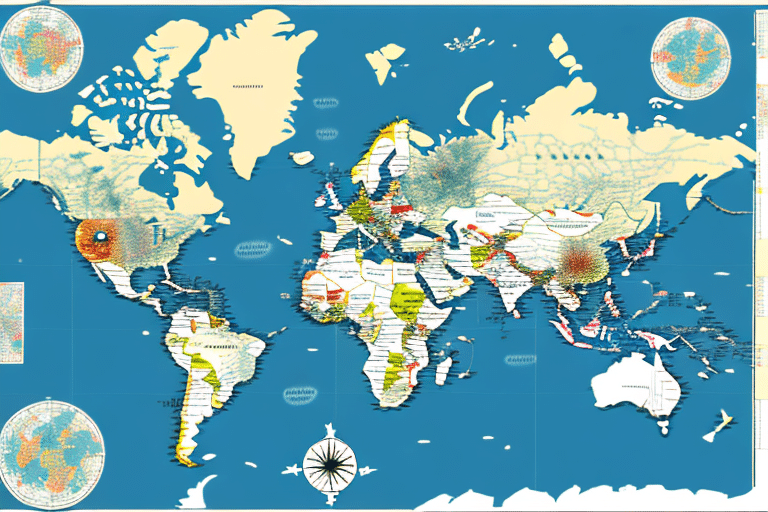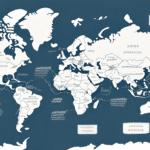What are Shipping Zones and Their Importance?
Shipping zones refer to the geographic classifications used by shipping carriers to determine the cost and delivery time of packages. Each carrier, such as UPS, FedEx, and the USPS, has its own unique zone system based on factors like distance, transportation routes, and infrastructure availability. Understanding shipping zones is crucial for e-commerce businesses as they directly influence shipping costs and delivery performance.
The Evolution and Determinants of Shipping Zones
The concept of shipping zones originated in the early 19th century with the expansion of railroads, which facilitated more structured and cost-effective shipping methods. Over time, shipping zones have evolved to accommodate advancements in transportation, changes in trade patterns, and the increasing complexity of global logistics.
Today, shipping zones are determined by various factors, including:
- Distance: The geographical distance between the shipping origin and destination.
- Transportation Routes: Availability and efficiency of transportation infrastructure.
- Package Characteristics: Weight, size, and handling requirements of the package.
- Destination Type: Residential vs. commercial areas can affect zone classification.
For instance, larger and heavier packages may fall into higher shipping zones due to the increased resources required for transportation.
Impact on Shipping Costs and Delivery Times
Shipping zones play a pivotal role in calculating shipping costs. Carriers use a formula that factors in package weight, size, shipping speed, and destination zone to determine the final cost. Generally, the farther the destination, the higher the shipping cost. According to the Statista Report, shipping costs can account for up to 30% of total e-commerce expenses.
In addition to costs, shipping zones also influence delivery times. Packages destined for zones closer to the origin typically arrive faster, while those sent to distant zones may experience longer transit times due to the greater distance and multiple transportation modes involved. Efficient management of shipping zones can lead to cost savings and enhanced delivery performance.
Determining and Managing Your Shipping Zone
Each shipping carrier provides unique zone maps that businesses can use to determine their shipping zones based on the destination address. Additionally, carriers offer online tools and calculators to assist in identifying the appropriate shipping zone. For example, the UPS Rate Calculator allows businesses to estimate shipping costs by entering package details and destination information.
Knowing your shipping zone is essential for accurately estimating shipping costs and delivery times. It enables businesses to make informed decisions when selecting shipping options and carriers, ultimately leading to better budget management and customer satisfaction.
Strategies to Optimize Shipping Zones and Reduce Costs
Optimizing shipping zones can lead to significant cost reductions for e-commerce businesses. Here are some effective strategies:
Analyze Shipping Data
Review your shipping data to identify regions with high customer concentrations. By focusing on these areas, you can negotiate better rates with carriers and potentially reduce the number of zones your business operates in.
Negotiate with Carriers
Establishing strong relationships with shipping carriers can provide leverage to negotiate favorable rates, especially if you regularly ship to specific zones. Consider leveraging Volume-Based Discounts offered by carriers like FedEx and USPS.
Utilize Third-Party Logistics Providers (3PL)
Partnering with a reputable 3PL can help optimize your shipping zones. 3PLs often have established relationships with multiple carriers, enabling them to secure better rates and streamline logistics operations.
Enhancing Customer Experience through Shipping Zones
Effective management of shipping zones can significantly improve the customer experience. By offering flexible shipping options tailored to different zones, businesses can meet diverse customer needs and preferences:
- Faster Delivery: Customers in closer zones can enjoy expedited shipping options, enhancing satisfaction.
- Competitive Pricing: Adjusting pricing based on shipping zones allows businesses to offer competitive rates while maintaining profit margins.
- Expanded Reach: Providing shipping options to remote zones can attract a broader customer base, increasing sales potential.
Moreover, clear communication about shipping costs and delivery times based on zones fosters transparency and trust, leading to higher customer loyalty.
Shipping Zones in International Business
International shipping introduces additional complexity to shipping zones due to varying regulations, infrastructure quality, and distance. Shipping costs for international zones are generally higher, and delivery times can vary significantly based on the destination country.
Businesses planning to expand internationally must consider:
- Carrier Zone Maps: Each carrier has distinct zone maps for international shipments. Understanding these can help in selecting the most cost-effective carrier.
- Customs Regulations: Different countries have unique customs laws that can affect shipping times and costs. Ensuring compliance is essential to avoid delays.
- Shipping Insurance: High-value items may require additional insurance when shipped internationally to mitigate risks.
According to the World Bank, efficient international shipping can enhance global trade, providing businesses access to new markets and growth opportunities.
The Role of Technology in Managing Shipping Zones
Advancements in technology have revolutionized the way businesses manage shipping zones. Modern shipping software and online tools offer numerous benefits:
Automated Zone Calculations
Software solutions can automatically calculate shipping zones based on real-time data, reducing manual errors and saving time. Tools like ShipStation integrate with multiple carriers to streamline the shipping process.
Real-Time Tracking
Real-time tracking systems allow businesses to monitor the progress of shipments, providing timely updates to customers. This transparency improves customer satisfaction and helps businesses manage logistics more effectively.
Data Analytics
Advanced analytics tools can analyze shipping data to identify trends, optimize shipping strategies, and forecast future shipping needs. Platforms like Flockjay offer comprehensive data analysis for logistics optimization.
Leveraging technology not only enhances efficiency but also provides valuable insights that can drive strategic decisions in shipping operations.
Best Practices for Managing Shipping Zones in E-commerce
Effective management of shipping zones is essential for optimizing costs and enhancing the customer experience. Here are some best practices for e-commerce businesses:
- Regularly Analyze Shipping Data: Continuously review shipping patterns to identify cost-saving opportunities and adjust strategies accordingly.
- Negotiate with Multiple Carriers: Engage with various carriers to secure competitive rates and flexible shipping options.
- Implement Flexible Shipping Options: Offer a range of shipping speeds and price points to cater to different customer preferences.
- Invest in Shipping Technology: Utilize advanced shipping software to automate processes, track shipments, and analyze data effectively.
- Train Staff: Ensure that your team is knowledgeable about shipping zones and best practices to manage shipping operations efficiently.
By adhering to these best practices, e-commerce businesses can effectively manage shipping zones, leading to reduced costs, improved delivery performance, and enhanced customer satisfaction.
In summary, shipping zones are a critical component of e-commerce logistics. Understanding and effectively managing shipping zones can lead to significant cost savings, faster delivery times, and a better overall customer experience. Leveraging technology and implementing strategic practices will position your business for growth and success in the competitive online marketplace.






















